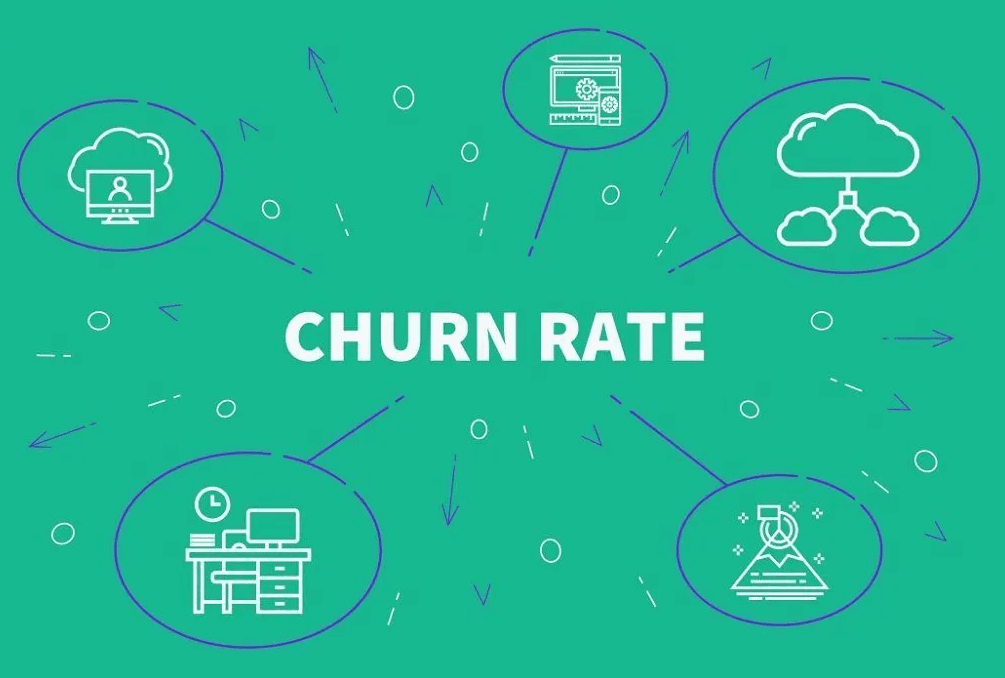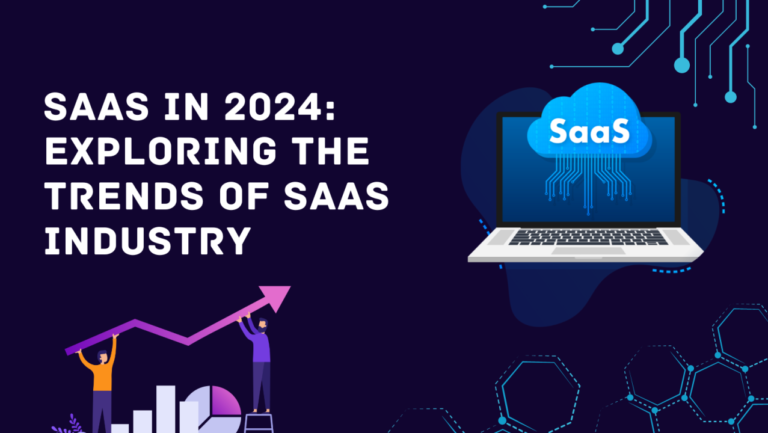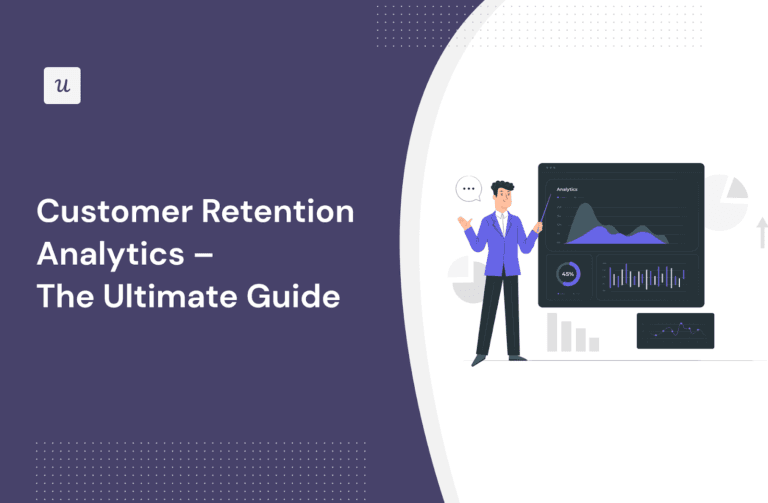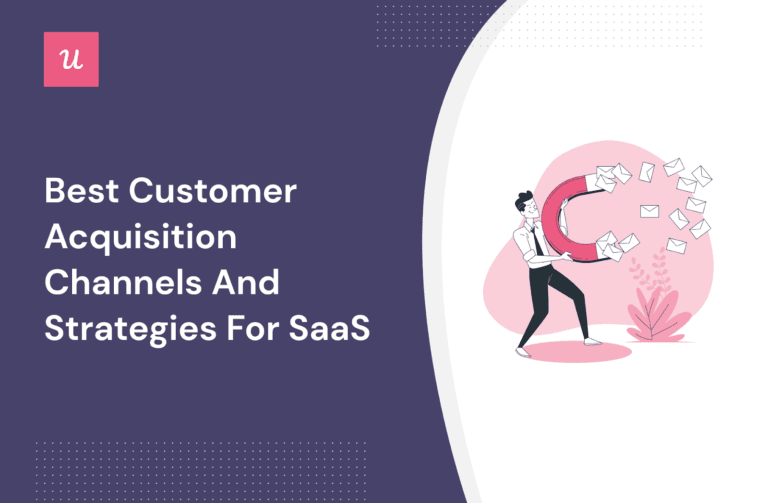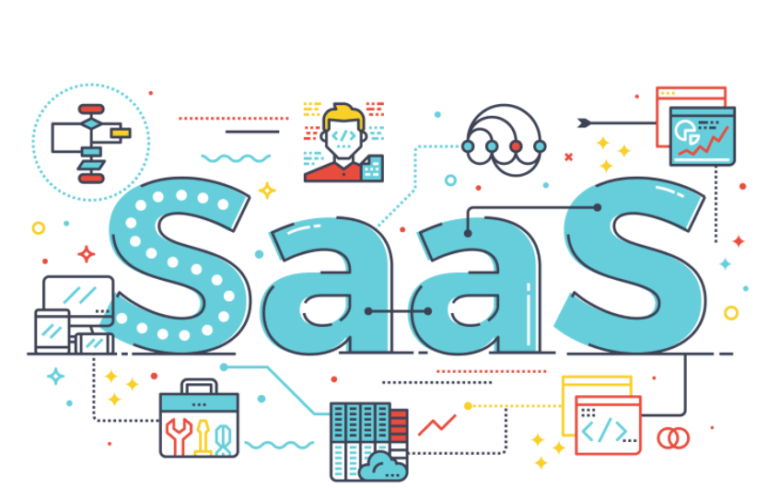The software-as-a-service (SaaS) industry relies heavily on reducing churn, which is the rate at which customers discontinue using a service or product. This attrition rate is crucial for a business’s revenue and growth prospects. In SaaS, churn is a measure of customer attrition over a specific period, and a business with 100 customers at the start of a month and five customers canceling before the end of the month can have a 5% churn rate.
Churn in SaaS businesses is not just about losing customers but also a loss of investment in acquiring them. To maintain customer satisfaction and growth, businesses must understand why customers leave and use this information to improve services like customer support, product user-friendliness, or pricing. Addressing churn is cost-effective, as existing customers are less costly to retain and can contribute more to revenue over time. Loyal customers can also drive business growth through word-of-mouth promotion.
Customer retention is essential for Software as a Service (SaaS) businesses to succeed. The pace at which users discontinue using your service, or churn, can harm your business’s capacity to develop and make money. Thus, it’s critical to put into practice efficient churn-reduction techniques. This thorough article examines several tactics that SaaS providers may use to reduce churn and increase client lifetime value.
Defining SaaS Churn Rate
For SaaS firms, the churn rate is a number that measures client attrition. In a nutshell, it’s the rate at which users stop using your SaaS product or cancel their membership. The churn rate, which is determined as a proportion of the whole customer base, offers important information about the state of your company and the efficacy of your customer retention tactics.

The churn rate is much more than simply a figure on a spreadsheet for SaaS companies. It is a reflection of long-term revenue potential, product-market fit, and customer pleasure. A high percentage of customer churn indicates that your customers are not happy with your product or service and may be having problems using it or have found better options elsewhere.
A SaaS company’s yearly churn rate is typically between 5 and 7%. This implies that you should anticipate losing 50–70% of your 1,000 clients annually. Considering the possibility of lost growth opportunities and the cost of client acquisition, these figures can have a big effect on your company’s bottom line.
What Is a Good SaaS Churn Rate?
As said in the beginning, the typical SaaS churn rate is typically between 3 and 8% each year. A high or “bad” churn rate indicates that either your consumers are dissatisfied or there are issues with the market that are causing you to lose a lot of business. A low rate, or a good rate, indicates that clients are satisfied and the product suits the market well.

Sector-specific industry benchmarks differ, although in general, lower is preferable. High yearly turnover rates raise the cost of client acquisition while impeding growth and profitability. Stable income and client loyalty are shown in low churn.
Determining your desired rate of churn is crucial to the success of SaaS. To put it another way, companies lose $136 billion annually due to preventable customer attrition. That is a significant figure.
Why is churn important for SaaS businesses?
Most people agree that one of the most crucial SaaS KPIs is churn. Here are a few explanations for this:

- It indicates lost revenue: The most obvious effect of churn is lost revenue. A SaaS company’s ongoing revenue stream declines as clients depart. Its capacity to invest in new projects, marketing, and other growth sectors may be impacted by this. Customer churn is a serious financial problem since it can sometimes be more expensive to acquire new customers than to keep existing ones.
- Product and service quality are reflected in it: Elevated attrition rates may suggest problems with the offering. This might be caused by unsatisfactory user interface, missing functionality, software issues, or insufficient customer service. Companies that see a rise in employee attrition should look closely into each of these categories to find and fix any issues.
- Market position and competition are indicated by it: high churn rates may indicate that rivals are providing superior products, services, or prices. A SaaS company may maintain its competitiveness by adjusting to market changes and needs by having a thorough understanding of churn.
- It gauges client satisfaction and loyalty: Churn is another indicator of client loyalty and pleasure. Customers are less likely to defect from a product if they are satisfied. Because of this, churn becomes an important indicator of how effectively the product satisfies the requirements and expectations of users.
- It can direct innovation and development: A SaaS company may pinpoint areas for improvement by knowing why customers are departing. This might entail updating the user interface, adding new features, or improving current ones. Exiting consumers’ feedback can offer valuable insights into how the product can be improved to better suit user demands.
- It may have an impact on a company’s value: One important indicator that investors look at when evaluating SaaS enterprises for investment is turnover rate. Investors may be put off by a high churn rate as it may indicate more erratic revenue growth and maybe deeper problems inside the company. On the other hand, a low churn rate may be desirable since it indicates a sound, long-term company strategy.
Effective churn management necessitates creating a customer-focused, agile company that keeps evolving. A SaaS company that understands and meets the demands of its customers is likely to have a low churn rate, which opens the door to long-term growth and success.
Finding the Most Typical Causes of Customer Churn
To properly handle customer attrition, you must determine the fundamental causes of your customers’ departure from your company. Gaining knowledge of these typical reasons will help you create focused plans to reduce attrition and increase client retention. The following are the main causes of client attrition:
Customer Satisfaction
Happy clients are more likely to stick with your SaaS offering. Unsatisfactory customer service, a dearth of requested features, and poor user experience can all turn away clients. You may discover pain areas and take proactive steps to enhance satisfaction by routinely collecting feedback through surveys and keeping an eye on customer support conversations.
According to statistics, if the client’s problem is fixed within the first interaction, 67% of customer turnover may be prevented. Personalized customer care and a smooth onboarding process are essential investments in reducing attrition rates.

Moreover, it’s critical to remember that consumer happiness is influenced by factors other than the product itself. Their general happiness is also influenced by elements like effective problem-solving, solid client connections, and clear communication. Customer retention may be greatly increased and churn rates can be considerably decreased by providing a nice customer experience throughout the customer journey.
Pricing Models and Their Impact on Churn
Pricing models are important for keeping customers. If the price of your SaaS product is too high or if abrupt price increases catch them off guard, they might look for less expensive options. To help reduce churn brought on by pricing worries, offer transparent pricing plans, tiered options, and value-added features. Pricing strategies must balance affordability and profitability. Market research and competitor analysis can yield useful information about pricing strategies that meet industry standards and customer expectations. You can keep your pricing models competitive and appealing to your target market by routinely evaluating and optimizing them.

Furthermore, accommodating varying client preferences and financial capacities may be achieved by providing variable payment alternatives, including monthly or annual subscriptions. Because it can adapt to the different demands and budgets of clients, this flexibility can assist lower churn rates.
As you can see from the subscription model maturity chart below, SaaS companies can offer their clients greater flexibility the more they shift their focus towards consumption and outcome, ideally through hybrid models. and the lower the rate of turnover.
In summary, churn rates are influenced by several essential elements, including pricing models and customer happiness, but it’s also critical to take other aspects of your organization into account. Long-term success and client loyalty may be established by consistently raising customer satisfaction levels and refining pricing tactics.
Strategies to Reduce Churn Rate
Now that we are aware of the significance of churn rate and have pinpointed a few possible reasons, let’s investigate methods to lower churn and raise customer retention.
Churn rate—also referred to as customer attrition—is an important indicator that companies need to keep an eye on. It calculates the proportion of consumers who, over a specified length of time, discontinue utilizing a good or service. A company’s capacity to develop and be profitable might be negatively impacted by high churn rates since it is sometimes more expensive to acquire new clients than to keep existing ones.

Examine The Causes Of Churn
As they say, the first step in fixing an issue is to understand it. First and foremost, you should look into why customers are leaving and what you can do to stop others from following their example if you find that, despite your best efforts, the churn rate is over a certain level.

Look into the customer’s past, the goods and services they have purchased or used, and their correspondence history first. Did the client bring up any grievances before departing? Did they provide any criticism? Were they discussing a rival? You’ll probably find some hints or contributing reasons by looking over all of this data, which might explain the rising customer turnover rate.
Establish A Basic Onboarding Procedure
One of the main reasons for a greater acquisition/trial turnover rate is poor onboarding. It’s doubtful that a new user or subscriber would utilize your product or service if you don’t take them by hand and walk them through every step of the process. Because of this, creating a thorough onboarding procedure is essential to lowering the SaaS industry’s turnover rate.

To educate and demonstrate to new clients how to utilize your products or services to the fullest, you may, for instance, send them a brief email, assign customer care professionals to handle onboarding, and provide instructional content for your blog, social media pages, and YouTube channel.
Establish A Relationship With Your Users
Actively interacting and building relationships with your clients is another crucial component in reducing customer attrition in SaaS companies. Customers will view you as a trustworthy partner if you build connections with them and stay in regular contact with them.

The following activities are part of this practice:
- Send out stuff to your consumers regularly that you think they’ll find helpful or interesting.
- Engage and establish a connection with them on social media.
- To let them know they can depend on you in a time of need, and get in touch with you if there are any concerns or brief troubles with the good or service.
Personalize the onboarding process for new customers
A key to client retention is a well-executed onboarding process. Personalized onboarding guarantees that every user understands how your SaaS solution meets their particular demands.
For instance, a product manager utilizing the same onboarding technology can have different objectives than a UX designer. You must first comprehend the demands of each user to properly customize their onboarding process and overall customer experience. To place users in the right section and learn more about their JTBD, utilize a welcome survey.

Lastly, show the onboarding process unique to their JTBD section. The aspects that are essential for the customer to accomplish their objectives with your product should be highlighted in this customized onboarding sequence.
Recognize the factors influencing value from current clients
Sort and examine the actions of your most valuable clients. Try to find out what your most valued users enjoy most about your app, what brings them joy, which features they use most frequently, and how often. To avoid user attrition, replicate their customer journey for new users afterward.

With feature tagging, you can monitor user activity and forecast features that your lucrative clients could find useful down the road based on their present requirements.
Ask For Customer Feedback
Get input from your clients and learn what brings them joy. Once you’ve located it, persevere and do it. That’s how you develop a foundation of devoted clients. One of the best ways to get feedback from both current and former clients is to have a review area on your website.
Sending them a personalized email in response to those evaluations can motivate them to provide you with more feedback. It is important to reply to reviews and questions from consumers with thanks and respect, regardless matter whether the feedback is good or bad.

You might also just get in touch with them and inquire about their opinions. By getting in touch with them, you may strengthen your bond with your clients and win their loyalty. You may discover where your consumers are stuck and walk them through the solution by having conversations with them.
Monitor the Competition
Keep a watch on your rivals’ customer satisfaction scores to learn how they are doing. You run the danger of losing your clients if they are outperforming you. Recognize what it is they are doing that you are not, and begin to apply it.
To keep customers from leaving, you want to make sure that your goods and services are as useful to them as possible. If you have something worthwhile to give, they won’t do business with your rival.

Recognize what your clients value and need, then provide it to them. Consider what sets you apart from the competition and build on that quality to draw in and keep clients. Determine what sets you apart from the competition and be sure to show it out to obtain an advantage.
Seek Customer Feedback
It’s now time to evaluate how all of these duties and activities affected your clients once you have completed them all. Getting consumer input is one of the best strategies for this task.

Source of Image: babelforce.com
To find out what the customers thought of your service and why they left, you may just write them an email. Send customized emails rather than generic ones to increase the efficacy of this tactic.
Share the feedback with the relevant department as soon as you receive it to determine what went wrong with the client and how to prevent it from happening in the future.
The churn rate reduction is a complex problem that calls for an all-encompassing strategy. You can drastically lower attrition and boost customer retention by comprehending the reasons behind it, putting good onboarding practices into place, boosting customer engagement, providing first-rate support, using customer feedback, and iteratively improving your product. Retaining consumers also requires proactive problem-solving, monitoring customer behavior, customizing the customer experience, and putting loyalty programs into place.
It’s critical to remain ahead of consumer expectations and industry trends in the ever-changing SaaS market. SaaS organizations may enhance customer happiness, foster better customer connections, and achieve sustainable development by using the principles indicated in this article. Recall that decreasing churn requires a sustained commitment to providing value and going above and beyond for customers.

